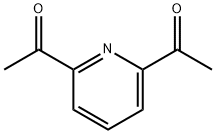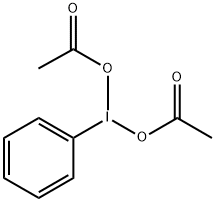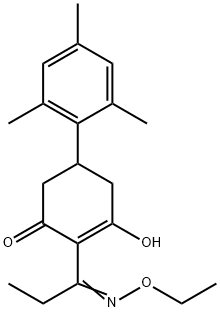2,3-Butanedione monoxime
Synonym(s):2,3-Butanedione 2-Monoxime - CAS 57-71-6 - Calbiochem;2,3-Butanedione monoxime, Biacetyl monoxime, BDM;BDM;Biacetyl monoxime;Diacetyl monoxime
- CAS NO.:57-71-6
- Empirical Formula: C4H7NO2
- Molecular Weight: 101.1
- MDL number: MFCD00002116
- EINECS: 200-348-5
- SAFETY DATA SHEET (SDS)
- Update Date: 2025-12-26 16:58:18

What is 2,3-Butanedione monoxime?
Chemical properties
white crystals
The Uses of 2,3-Butanedione monoxime
2,3-Butanedione monoxime is a reversible inhibitor of myosin ATPase. It is also used as a reagent for colorimetric determination of urea.
What are the applications of Application
2,3-Butanedione 2-Monoxime is a reversible inhibitor of myosin ATPase
Preparation
Approximately 9 moles of ethyl nitrite are required for this preparation. The literature indicates a suitable apparatus for its generation.
In a well-ventilated hood, to freshly dried and distilled methyl ethyl ketone (620 gm, 8.6 moles) is added, with stirring, 40 ml of cone, hydrochloric acid. The temperature of the reaction system is raised to 40°C. Without delay the addition of ethyl nitrite is initiated and the flow of the reagent is regulated to such a rate that the reaction temperature never exceeds 55°C. About 1.5 hr are required for the addition. The ethanol formed in the reaction, as well as unreacted methyl ethyl ketone, is separated by distillation until the pot temperature just reaches 90°C.
The product is separated from the residue by rapid steam distillation. Virtually all of the product will be found in the first 5 liters of the distillate. The distillate is saturated with 1.5 kg of sodium chloride and cooled to 0°C. The product, which precipitates out, is filtered off. If necessary, the product may be recrystallized from water to afford 500 gm (58%), m.p. 76.5°C.

Definition
ChEBI: Diacetylmonoxime is a ketoxime obtained via formal condensation of butane-2,3-dione with hydroxylamine. It is a reversible myosin ATPase inhibitor. It has a role as a cholinesterase reactivator, a chromogenic compound and an EC 3.6.1.3 (adenosinetriphosphatase) inhibitor.
General Description
Cream-colored powder.
Air & Water Reactions
Soluble in water.
Reactivity Profile
2,3-Butanedione monoxime may react violently during vacuum distillation above 130 pascals.
Fire Hazard
Flash point data for 2,3-Butanedione monoxime are not available, but 2,3-Butanedione monoxime is probably combustible.
Biological Activity
2,3-butanedione-2-monoxime is a myosin atpase inhibitor.myosin, an atpase, can convert chemical energy into directed movement and is regarded as a molecular motor. myosin has various shapes and sizes. more than 11 myosin classes have been identified, and more will be found. the common feature of all of these molecules is a section close to the n terminus, which can be identified as a motor domain.
Biochem/physiol Actions
DRK1 is a delayed rectifier (Kv2.1) cloned K+ channel from rat brain with consensus sites for protein kinase-dependent phosphorylation that might be expected to be functionally regulated by phosphorylation. 2,3-Butanedione monoxime (BDM) chemically removes phosphate groups from many proteins, and its action on DRK1 channels was examined after expression of DRK1 cRNA in Xenopus oocytes. In two-microelectrode voltage-clamp experiments, the application of 2,3-Butanedione monoxime to the bath inhibited DRK1 current (ki = 16.6 mM, H = 0.96) rapidly and reversibly, with a time course similar to the time course of solution change within the bath. DRK1 current was inhibited at all potentials; the time course of current activation, deactivation and inactivation were unaffected by 2,3-Butanedione monoxime. In inside-out patch-clamp experiments, the application of 2,3-Butanedione monoxime to the cytoplasmic surface similarly inhibited channel activity rapidly and reversibly (ki = 10.7 mM, H = 1.01) in the absence of rephosphorylating substrates. These results are inconsistent with a phosphatase effect, because such an effect should be irreversible in cell-free, ATP-free patches. Instead, the results suggest that 2,3-Butanedione monoxime can inhibit DRK1 channels directly from inside or outside of the membrane.
Safety Profile
Poison by intraperitoneal route. When heated to decomposition it emits toxic vapors of NOx.
in vitro
2,3-butanedione-2-monoxime (bdm), a general probe of myosin function, was widely used in muscle research as a low-affinity but specific chemical phosphatase that could reversibly inhibit the myosin cross-bridge cycle. it was found that wild-type cells treated with bdm at 20 mm for around two generation times were smaller than untreated controls and showed a septation index about twice that observed in the absence of the inhibitor. moreover, the organization of actin at the cell poles was disorganized in the presence of bdm, however, cells formed a cytokinetic actin ring. in addition, when nitrogen-starved stationary-phase cells were reinoculated into fresh medium in the presence of bdm, the time taken to repolarize the actin cytoskeleton and to resume the characteristic vegetative cell shape were both delayed substantially [1].
References
[1] may km, wheatley sp, amin v, hyams js. the myosin atpase inhibitor 2,3-butanedione-2-monoxime (bdm) inhibits tip growth and cytokinesis in the fission yeast, schizosaccharomyces pombe. cell motil cytoskeleton. 1998;41(2):117-25.
Properties of 2,3-Butanedione monoxime
| Melting point: | 75-78 °C(lit.) |
| Boiling point: | 185-186 °C(lit.) |
| Density | 1.2085 (rough estimate) |
| refractive index | 1.4340 (estimate) |
| Flash point: | 185-186°C |
| storage temp. | Inert atmosphere,Room Temperature |
| solubility | Chloroform (Slightly), Methanol (Slightly) |
| form | Crystalline Powder |
| pka | 9.32±0.10(Predicted) |
| color | White to almost white |
| Odor | Odorless |
| Water Solubility | 5 g/100 mL (20 ºC) |
| Sensitive | Hygroscopic |
| BRN | 605582 |
| Stability: | Stable. Incompatible with strong oxidizing agents. |
| CAS DataBase Reference | 57-71-6(CAS DataBase Reference) |
| NIST Chemistry Reference | 2,3-Butanedione, monooxime(57-71-6) |
| EPA Substance Registry System | Diacetyl monooxime (57-71-6) |
Safety information for 2,3-Butanedione monoxime
Computed Descriptors for 2,3-Butanedione monoxime
| InChIKey | FSEUPUDHEBLWJY-HWKANZROSA-N |
2,3-Butanedione monoxime manufacturer
JSK Chemicals
Innovative
Techno Pharmchem
Jaiswal S Cyber Shop
New Products
4,4-Difluoropiperidine hydrochloride tert-butyl 9-methoxy-3-azaspiro[5.5]undecane-3-carboxylate Indole Methyl Resin N-Isopropylurea N,N-Dicyclohexylcarbodiimide(DCC) MELDRUMS ACID 5-METHYLISOXAZOLE-4-CARBOXYLIC ACID Magnessium Bis glycinate Zinc ascorbate 1-bromo-2-butyne 2-acetamidophenol 9(10H)-anthracenone Erythrosin B, 4-Piperidinopiperidine 2-((4-morpholinophenylamino) (methylthio) methylene) malononitrile 2,4-dihydroxybenzaldehyde 3-(4-morpholinophenylamino)-5-amino-1H-pyrazole-4-carbonitrile Methyl 2-methylquinoline-6-carboxylate 2,6-dichloro-4-nitropyridine 4-Bromo-2-chlorobenzonitrile 2-(benzylamino)acetic acid hydrochloride 4-(tert-Butoxycarbonylamino)but- 2-ynoic acid 3,4-dihydro-2H-benzo[b][1,4]dioxepine 1-Phenyl-1-cycloprppanecarboxylicacidRelated products of tetrahydrofuran








You may like
-
 DIACETYL MONOXIME 99%View Details
DIACETYL MONOXIME 99%View Details -
 Diacetyl monoxime, GR 99%+ CAS 57-71-6View Details
Diacetyl monoxime, GR 99%+ CAS 57-71-6View Details
57-71-6 -
 Diacetylmonoxime extrapure AR CAS 57-71-6View Details
Diacetylmonoxime extrapure AR CAS 57-71-6View Details
57-71-6 -
 Diacetyl Monoxime CAS 57-71-6View Details
Diacetyl Monoxime CAS 57-71-6View Details
57-71-6 -
 DIACETYL MONOXIME AR CAS 57-71-6View Details
DIACETYL MONOXIME AR CAS 57-71-6View Details
57-71-6 -
 Diacetyl MonoximeView Details
Diacetyl MonoximeView Details
57-71-6 -
 Diacetylmonoxime (CAS Number: 57-71-6), Packaging Size: 1 kg / 5 kg / 10 kg / 25 kgView Details
Diacetylmonoxime (CAS Number: 57-71-6), Packaging Size: 1 kg / 5 kg / 10 kg / 25 kgView Details
57-71-6 -
 White Jcssuper 57-71-6 Diacetyl Monoxime Ar 25 Gm., Packaging Type: Bottle, Grade Standard: Chemical GradeView Details
White Jcssuper 57-71-6 Diacetyl Monoxime Ar 25 Gm., Packaging Type: Bottle, Grade Standard: Chemical GradeView Details
57-71-6
